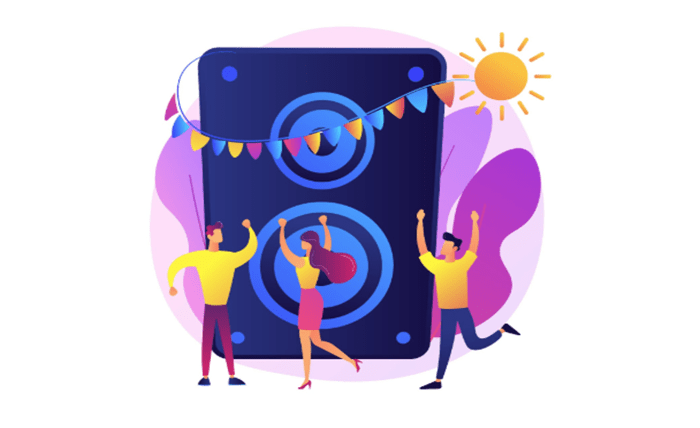In today’s fast-paced world, organizing a party can be a daunting task. From sending invitations to managing RSVPs, coordinating activities, tracking budgets, and more—there’s a lot to juggle. Fortunately, technology has stepped in to simplify the process through party planning apps. These apps use a combination of modern technologies to streamline every aspect of event organization, making it easier, faster, and more fun for users. In this article, we explore the core technologies behind a party planning app and how they come together to create a seamless user experience.
User Interface and Experience (UI/UX)
At the heart of any successful party planning app is its user interface and user experience design. The UI/UX team focuses on creating an intuitive, visually appealing, and easy-to-navigate platform. Using modern frontend technologies like React Native, Flutter, or Swift (for iOS) and Kotlin (for Android), developers build responsive and smooth interfaces that work across multiple devices. This ensures users can quickly access features such as creating events, sending invitations, or browsing activity ideas without confusion.
Design principles also emphasize simplicity and efficiency. For instance, the app may provide drag-and-drop tools to build event timelines or interactive checklists for party preparations. Clear iconography and notifications help keep users informed, enhancing engagement.
Backend Architecture and Cloud Computing
Behind the scenes, the backend is the engine powering all functionalities of the app. Modern party planning apps rely on cloud computing platforms like Amazon Web Services (AWS), Google Cloud Platform (GCP), or Microsoft Azure to host their databases, APIs, and application logic.
The backend manages data storage, user authentication, event details, guest lists, and communication between users. It uses RESTful APIs or GraphQL to handle requests from the frontend and send back responses. For example, when a user creates an event, the backend processes this request, stores the event data securely in a database, and updates all relevant user profiles.
Databases like PostgreSQL, MongoDB, or Firebase Realtime Database are often employed to store structured data about events, users, RSVPs, and messages. Firebase, in particular, offers real-time data synchronization, allowing instant updates — for example, when a guest confirms attendance, everyone in the group sees the update immediately.
Real-Time Communication and Collaboration
A critical feature for party planning apps is enabling communication and collaboration among users. Technologies like WebSockets and real-time databases facilitate live chat, voting on party activities, or updating task lists. For instance, imagine planning a birthday party where friends can vote on the venue or menu options. WebSocket connections allow the app to push updates instantly without the user needing to refresh, making group decision-making smooth and interactive. Apps like Batch take this further by offering integrated tools such as party countdowns, RSVP tracking, and chat features that keep everyone involved and organized in one easy-to-use platform.
Additionally, integration with popular messaging platforms or in-app chat systems built with technologies like Firebase Cloud Messaging (FCM) or Socket.io ensure notifications and messages are delivered promptly, keeping everyone connected.
Invitation Management and RSVP Tracking
Managing invitations and tracking responses is a core function of party planning apps. The technology here often involves automated email and SMS services. Apps integrate with services like SendGrid, Twilio, or Mailgun to send personalized invites and reminders.
Each invitation typically contains a unique link or code that connects to the app’s database to record RSVP statuses. This integration helps hosts see who’s attending in real time and adjust planning accordingly. Some apps also include calendar sync capabilities (Google Calendar, Apple Calendar) so guests can add events directly to their personal schedules.
Budgeting and Expense Tracking
Many party planning apps include budgeting tools to help hosts manage expenses. This involves storing budget data securely and providing real-time updates on spending.
The app’s backend calculates totals, individual contributions, and tracks payments. Integration with payment gateways like Stripe or PayPal allows users to make deposits or split costs within the app. Visual tools like charts and progress bars are generated on the frontend using libraries such as D3.js or Chart.js, helping users see how their budget holds up at a glance.
AI and Personalization
Increasingly, party planning apps leverage Artificial Intelligence (AI) and Machine Learning (ML) to enhance user experience. AI algorithms can analyze past event data and preferences to offer personalized recommendations, such as suggesting party themes, vendors, or playlists tailored to the group’s tastes.
Natural Language Processing (NLP) technologies enable smart chatbots or voice assistants within the app to answer user questions, provide tips, or help with task management. This reduces friction and makes the app feel more like a personal party assistant.
Security and Privacy
Handling user data—especially personal contacts, event details, and payment information—requires robust security measures. Party planning apps implement end-to-end encryption for sensitive data, secure authentication protocols like OAuth 2.0, and comply with data protection regulations such as GDPR or CCPA.
Multi-factor authentication (MFA) may be offered to ensure account security. Additionally, secure cloud infrastructure with regular backups protects user data from loss or unauthorized access.
Integration with Third-Party Services
To enrich functionality, party planning apps often integrate with external services. These may include:
-
Vendor platforms for catering, decoration, or entertainment bookings.
-
Music streaming services (Spotify, Apple Music) for curated playlists.
-
Maps and location services (Google Maps) to help guests find the venue.
-
Social media platforms for sharing event photos or updates.
APIs (Application Programming Interfaces) make these integrations possible, allowing the app to pull or push data seamlessly and offer a richer user experience.
The technology behind a party planning app is a complex ecosystem of frontend design, backend cloud infrastructure, real-time communication, AI personalization, and robust security. By combining these technologies, such apps transform what was once a stressful chore into a simple, collaborative, and enjoyable process. As technology advances, we can expect even smarter, more intuitive party planning tools that make celebrating with friends and family easier than ever before. Whether you’re planning a small gathering or a large event, these apps are now an indispensable part of modern social life.


